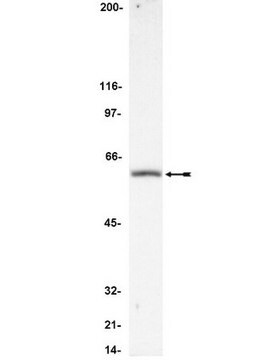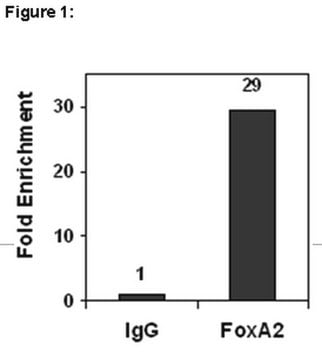06-1334
Anti-phospho-TAB1 (Thr431) Antibody
from rabbit, purified by affinity chromatography
Sinónimos:
TGF-beta activated kinase 1/MAP3K7 binding protein 1, TAK1-binding protein 1, transforming growth factor beta-activated kinase-binding protein 1, mitogen-activated protein kinase kinase kinase 7 interacting protein 1, Mitogen-activated protein kinase kin
About This Item
Productos recomendados
origen biológico
rabbit
Nivel de calidad
forma del anticuerpo
affinity isolated antibody
tipo de anticuerpo
primary antibodies
clon
polyclonal
purificado por
affinity chromatography
reactividad de especies
rat, human, horse, mouse
reactividad de especies (predicha por homología)
equine (based on 100% sequence homology), ox (based on 100% sequence homology)
técnicas
western blot: suitable
Nº de acceso NCBI
Nº de acceso UniProt
Condiciones de envío
wet ice
modificación del objetivo postraduccional
phosphorylation (pThr431)
Información sobre el gen
human ... TAB1(10454)
Descripción general
Especificidad
Inmunógeno
Aplicación
Inflammation & Immunology
Immunoglobulins & Immunology
Calidad
Western Blot Analysis: 1 µg/mL of this antibody detected TAB1 on 10 µg of L6 cell lysate.
Descripción de destino
Forma física
Almacenamiento y estabilidad
Nota de análisis
L6 cell lysate
Otras notas
Cláusula de descargo de responsabilidad
Not finding the right product?
Try our Herramienta de selección de productos.
Código de clase de almacenamiento
12 - Non Combustible Liquids
Clase de riesgo para el agua (WGK)
WGK 1
Punto de inflamabilidad (°F)
Not applicable
Punto de inflamabilidad (°C)
Not applicable
Certificados de análisis (COA)
Busque Certificados de análisis (COA) introduciendo el número de lote del producto. Los números de lote se encuentran en la etiqueta del producto después de las palabras «Lot» o «Batch»
¿Ya tiene este producto?
Encuentre la documentación para los productos que ha comprado recientemente en la Biblioteca de documentos.
Nuestro equipo de científicos tiene experiencia en todas las áreas de investigación: Ciencias de la vida, Ciencia de los materiales, Síntesis química, Cromatografía, Analítica y muchas otras.
Póngase en contacto con el Servicio técnico







